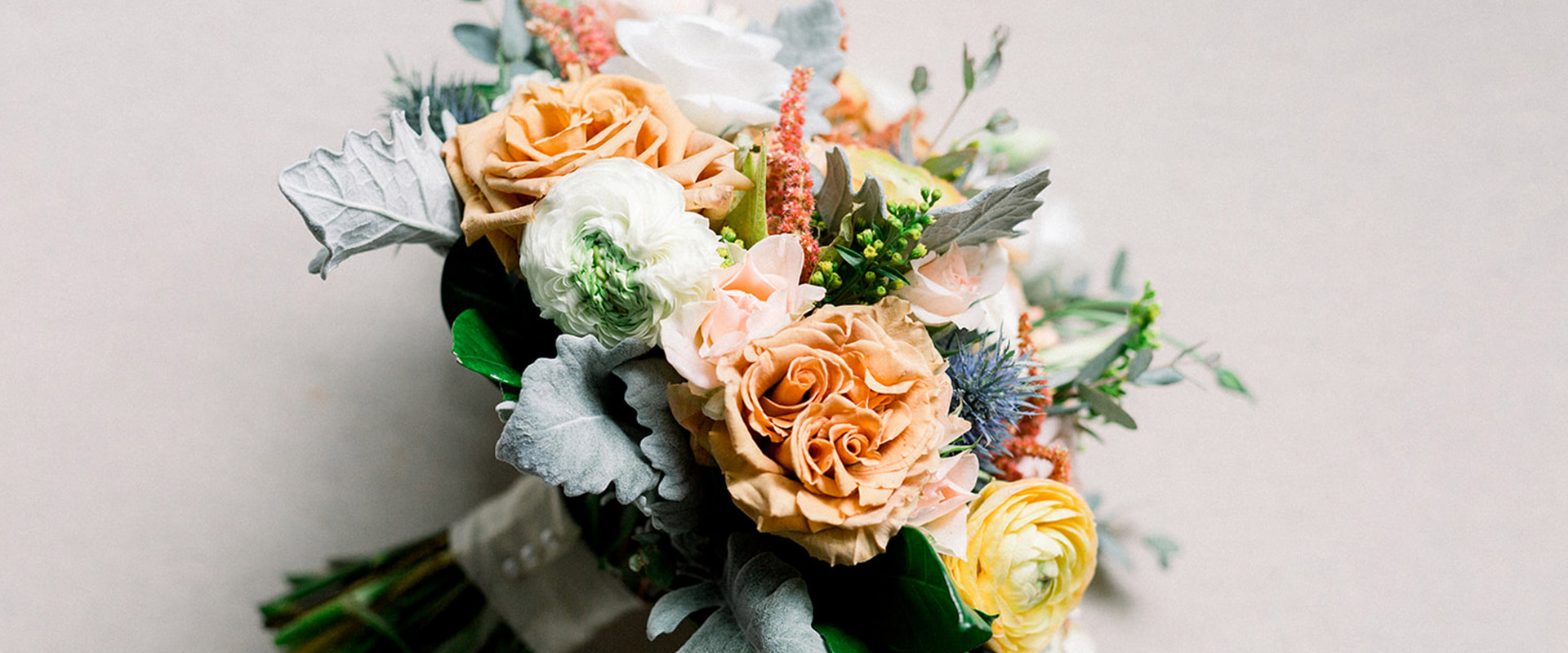
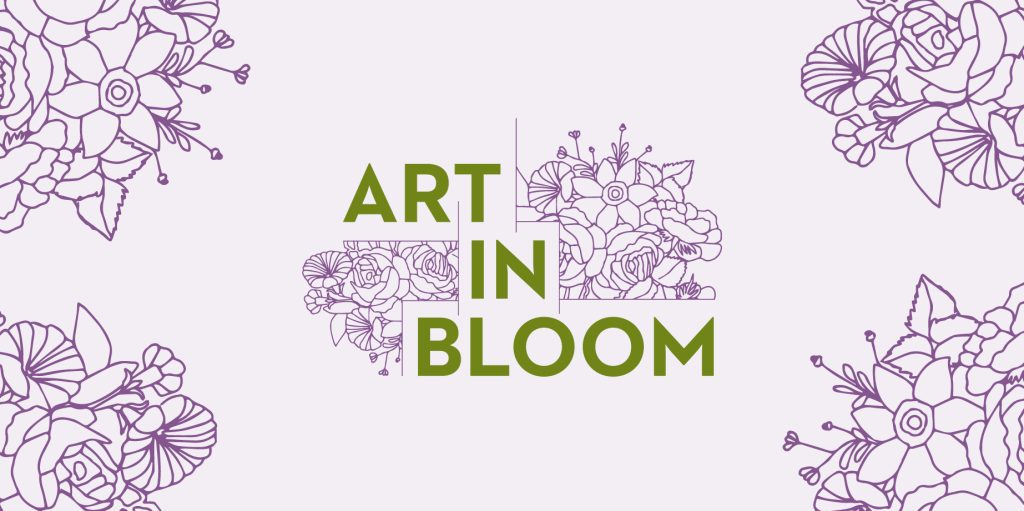
Art in Bloom is a wonderful event put together by The Westmoreland Museum of American Art. Located in Greensburg, PA (east of Pittsburgh), it’s an easy drive. How lucky we are to have the opportunity to participate in such a beautiful celebration of the art of floral design! Museums around the country have displays such as this.
I am grateful that the Westmoreland has brought it to our doorstep.
If you are not familiar with Art in Bloom, here is how it works:
This is such a wonderful exercise as a creative person and artist! You might get a painting, a textile, a sculpture, or any other variation of a visual art. Meaning, you have to be ready for anything. This includes colors that might not be readily available in flowers. Or maybe your art piece has no real color at all. Professional florists who work in weddings, funerals, and daily deliveries work within the confines of the requests and desires of clients. However, creating from scratch off of a piece of artwork can be a challenge. It really stretches and showcases the ability of a floral designer.
This year, I pulled Elizabeth Jennerjahn’s Floating Squares. A textile piece of some scale that is a part of the museum’s “Our Own Work, Our Own Way: Southern Modern Women Artists” exhibit. For sure, this piece threw me for a loop given its unique color palette and subject (squares!). These are traits not inherent to the natural attributes of flowers.
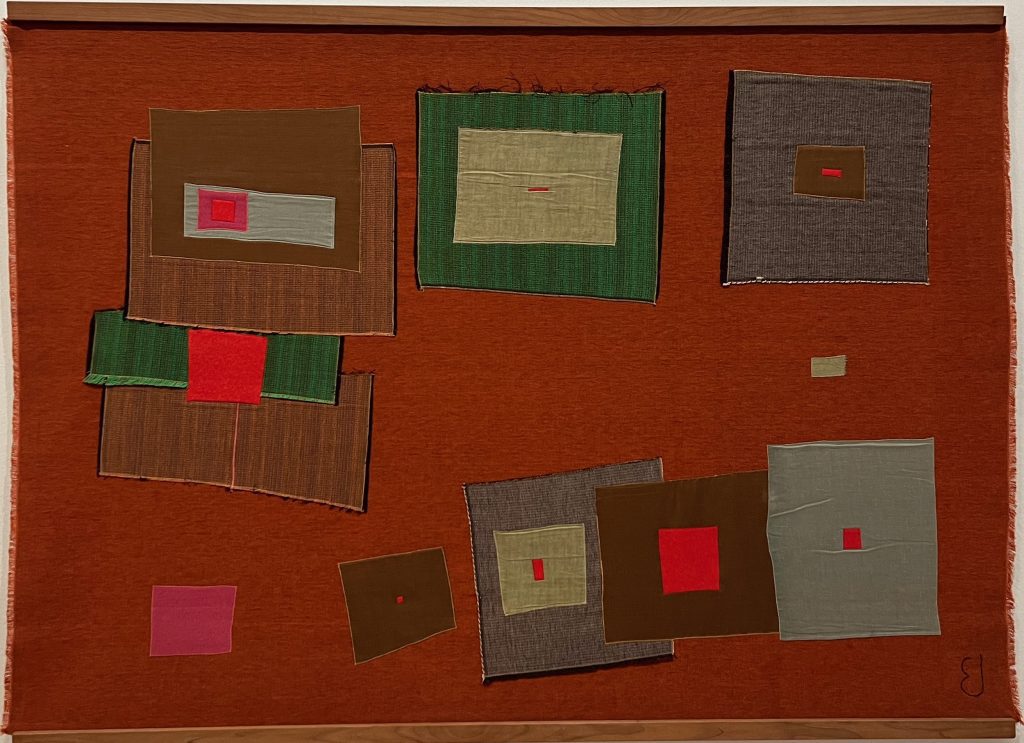
My first step is always to research the artist. To get to know who they are and the motivations behind their art. I follow this by learning as much as I can about the artwork itself.
In this case, I learned that Elizabeth Jennerjahn, after studying at two other universities, found herself at Black Mountain College in North Carolina. While attending, she took classes in visual and textile arts. From there, she went to New York to pursue modern dance. She later continued to study dance when she returned to Black Mountain a few years later after marrying her husband, also an artist. It was during her second turn at Black Mountain (1948-1951), though she did instruct dance and movement, that she turned her focus toward textiles. She produced several pieces in this medium. In 1951, the Jennerjahns spent time in France and eventually settled in New York City. They later moved to Arizona where Elizabeth died in 2007 at the age of 83.
Texture, textiles, movement. Seeing art in a new way by creating these elements in a new medium. This is how I imagine Elizabeth Jennerjahn’s mind worked. It is said that this piece is reflective of her dancing background and demonstrates movement and light. I see a little something different: A rebellious spirit. Perhaps I am projecting myself a little here- but is that not the point of art? To see ourselves in it?
Between dancing and alternative media arts, she envisioned things in unique ways. As a southern woman in the 1940s and 50s, she would have had to be a bit rebellious. Thrusting herself into the art scene, taking on leadership roles, and becoming a professor herself. Traditional quilting patterns are often described with the term “floating squares.” Jennerjahn’s Floating Squares puts a distinct spin on the traditional art of quilting. To my mind, this piece pushes the boundary of what is traditional. Jennerjahn takes a pattern that is structured and rigid and says “Ha- these squares are actually floating.” The opposite of structured and rigid.
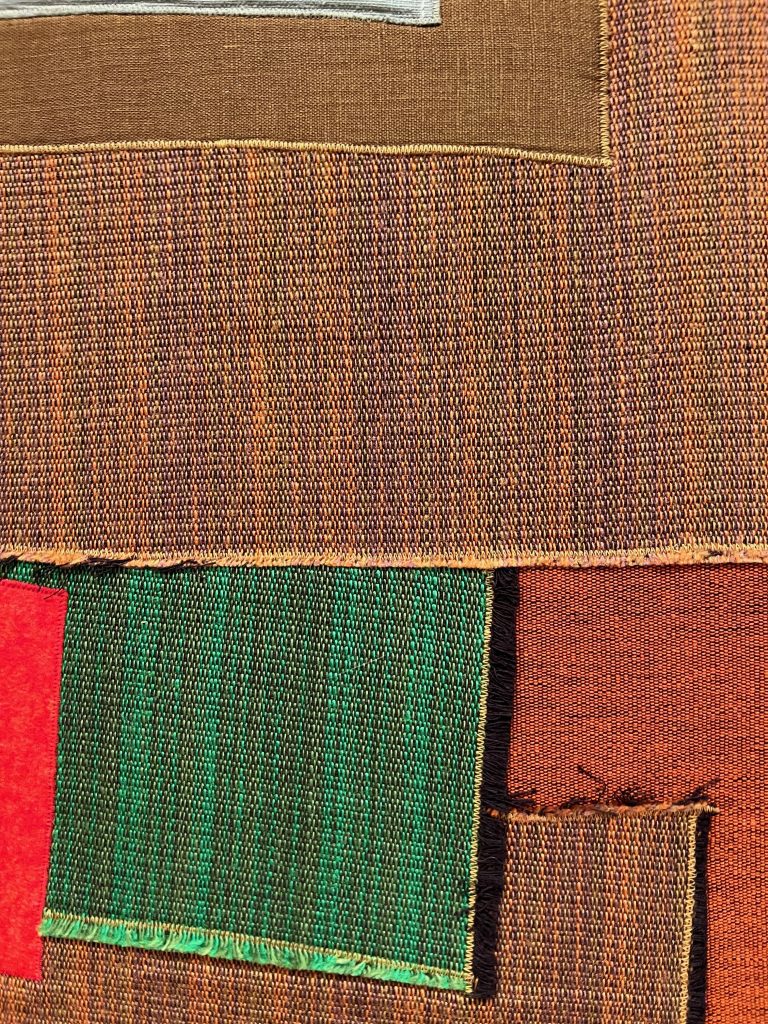
It was certainly a challenge to create around this artwork. I love the (self imposed) feeling of rebellion I saw in it, but I struggled to interpret it in flowers. For one, the colors are jarring which is against my intuition. And they are colors not readily available in flowers- certainly not in spring. But texture is one of my floral design love languages! So, I dove headlong into the idea of textiles, variation of surfaces, and the idea of fabric and weaving.
I strove to incorporate textiles, but wanted it to be unique. The fabric wrapping two of the vases has a fun history and certainly pulls the feel of Floating Squares. When my parents were first married, my dad was restoring a 1932 Model A Ford pickup truck. My mom used that fabric to upholster the seats. Bits of leftovers were (still are…) in my mom’s big box of remnants. Growing up I saw it constantly as I dug through for various art projects of my own. I told my mom, “I bet you never thought you’d see this old fabric in a museum did you!?” I also incorporated woven lily grass as a nod to Jennerjahn’s weaving and use of textiles in her art.
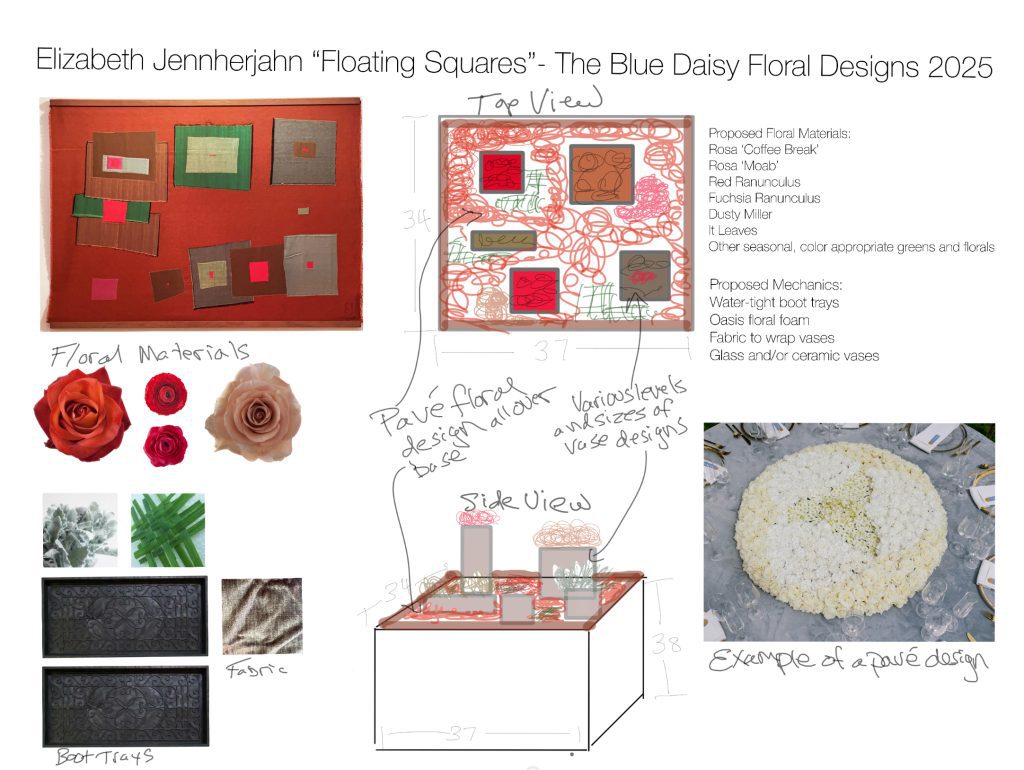
One of my favorite parts of this design was digging into our vase graveyard to pull several pieces. This collection includes mismatched event leftovers and drop offs from someone else’s vase stash that they cleaned out of their home. It is always a florist’s pleasure to reuse items in the shop!
The overall design is based on a pavé style which translates to “pavers.” Florals are designed flat and use color and texture to make a pattern akin to an elaborate courtyard or walkway. This is a style of design I’ve always loved and appreciated. We have incorporated it in client work in the past. I feel it’s a relatively unknown style of floral design. It is quite unique and impactful, so I was happy to have the opportunity to use it in this piece.
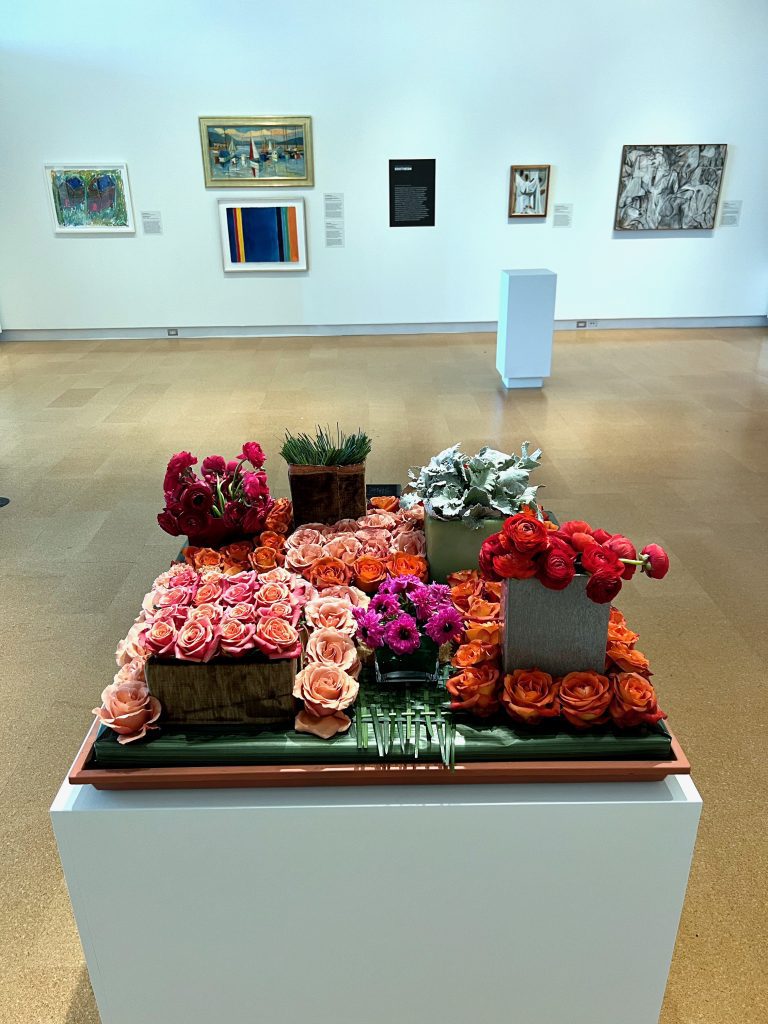

It was an honor to participate in the Westmoreland’s Art in Bloom exhibit again this year! I hope you have a chance to make it to the museum to enjoy it. It is always such a joy to get to experience, not only wonderful American art, but our region’s most exceptional floral artists as well! To see my entry from 2024, check out our Art in Bloom 2024 post HERE.
If you’d like a virtual tour of my 2025 design, please enjoy this quick video:
Sign up here to receive updates, insider info, early access, and more!
"*" indicates required fields
412. 367. 5810 | 1105 ROCHESTER ROAD, STE 103, PITTSBURGH, PA 15237
© 2025 The Blue Daisy Floral Designs | Web Design by: Three Ring Focus